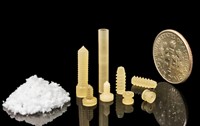Advertisement
Grab your lab coat. Let's get started
Welcome!
Welcome!
Create an account below to get 6 C&EN articles per month, receive newsletters and more - all free.
It seems this is your first time logging in online. Please enter the following information to continue.
As an ACS member you automatically get access to this site. All we need is few more details to create your reading experience.
Not you? Sign in with a different account.
Not you? Sign in with a different account.
ERROR 1
ERROR 1
ERROR 2
ERROR 2
ERROR 2
ERROR 2
ERROR 2
Password and Confirm password must match.
If you have an ACS member number, please enter it here so we can link this account to your membership. (optional)
ERROR 2
ACS values your privacy. By submitting your information, you are gaining access to C&EN and subscribing to our weekly newsletter. We use the information you provide to make your reading experience better, and we will never sell your data to third party members.
Materials
Onionlike hydrogels
March 10, 2008
| A version of this story appeared in
Volume 86, Issue 10
Interruptions in a gelation process have yielded the first hydrogel with a membrane architecture that resembles the distinct layers of an onion (Nature 2008, 452, 76). These onionlike hydrogels have potential uses in tissue engineering or regenerative medicine because, unlike other scaffolds, these materials could host various kinds of cells in separate compartments between the membrane layers. Laurent David and colleagues at the University of Lyon, in France, used the polysaccharide chitosan to form an alcohol gel. For this material to form a stable physical hydrogel, the alcohol gel must be completely neutralized with a basic solution. Prematurely removing the gel from this solution prevents base from completely permeating the material and creates a hydrogel membrane that encloses an alcohol gel core. David says the process was repeated up to 20 times to create a hydrogel with 20 separate membrane layers. He adds that the simple procedure can be used to generate multimembrane systems of various shapes from other polysaccharides.





Join the conversation
Contact the reporter
Submit a Letter to the Editor for publication
Engage with us on Twitter